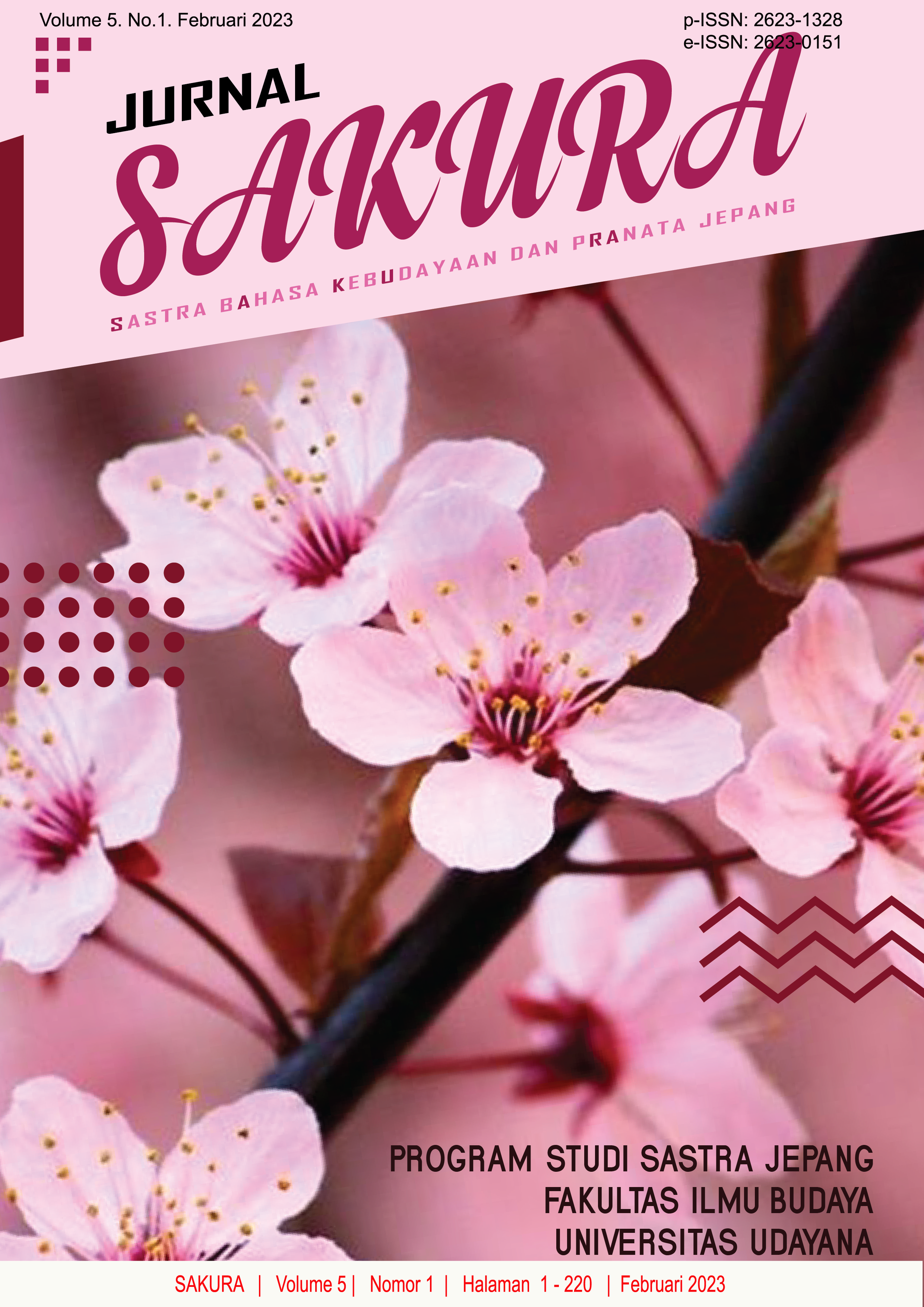Implementasi Konsep Mottainai sebagai Upaya Pelestarian Lingkungan dalam Anime Mottainai Baasan karya Mariko Shinjuu
Abstract
This article discusses about the environmental problem and the implementation of mottainai to preserve the environment in Mottainai Baasan anime. The method used in this article was content analysis with a qualitative approach. The ecocriticism literary theory by Garrard and an environmental ethics theory by Keraf are used as the basic theorethical. The results indicate that in the anime, four environmental problems are found which include soil pollution, water pollution, food waste, and energy waste, which occur due to a lack of understanding about environmental conservation. Environmental problems that continue to occur make Japanese people strive to preserve the environment by implementing the mottainai concept. The implementation of mottainai is reflected in the environmental ethics principle, such as: 1) respect for nature, including the awareness that environment has a value and allowing living creature in the environment to live and grow; 2) moral responsibility for nature, including awareness to protect the environment and prevent environmental damage; 3) caring for nature, including caring for living beings who experience difficulties and awareness that the environment has the right to be protected; 4 simple lifestyle and in harmony with the environment; including maximizing the function of an object to reduce consumptive behavior.
Downloads
References
Garrard, Greg. (2004). Ecocriticism. New York: Routledge.
Hoy, Selena. (2018). “Mottainai: Reduce, Reuse, Recycle – and Respect”. Highlighting Japan, 122(12), hlm. 28-29.
Indrawati, Dewi. (2014). Kritik Lingkungan Terhadap Pencemaran Laut dalam Film Doraemon: Nobita no Ningyo Daikaisen Karya Kozo Kusuba. Skripsi. Universitas Brawijaya.
Keraf, Alexander Sonny. (2010). Etika Lingkungan Hidup. Jakarta: Penerbit Buku Kompas.
Kestenbaum, David. (2007). Mottainai Grandma Reminds Japan, ‘Don’t Waste’. (Diakses pada 22 Maret 2022 dari alamat https://www.npr.org/templates/story/story.php?storyId=14054262)
Mackey, Patrick. (2017). Japan’s Unique View of Nature. (Diakses pada 15 Mei 2021 dari alamat https://toyokeizai.net/articles/-/190690?display=b&ismmark=a)
Mufrizon, Harry. (2005). Hubungan Manusia, Alam dan Ilmu Pengetahuan, Sebuah Telaah Sederhana. Jakarta: Kotakota.
Muljaningsih, Sri. (2002). Membuat Kertas Daur Ulang Berwawasan Lingkungan. Depok: Puspa Swara.
Nakayama, Kira. (2017). Mengenali Prinsip Mottainai Masyarakat Jepang. (Diakses pada 29 Mei 2021 dari alamat https://www.artforia.com/mengenali-prinsip-mottainai-masyarakat-jepang/)
Rahmadyani, Helfa dan Kusuma, H.E. (2019). “Empat Kelompok Perilaku Boros Energi: Penyusunan Hipotesis Menggunakan Grounded Theory”. Jurnal Pemukiman, 14(2), hlm. 82-91.
Shinju, Mariko. 2020. Anime Mottainai Baasan. (Diakses pada 12 Mei 2021 dari alamat https://mottainai-baasan.com/)
Taylor, Kevin. (2015). Mottainai: A Philosophy of Waste From Japan. (Diakses pada 12 Mei 2021 dari alamat https://www.academia.edu/1041581/Mottainai_A_Philosophy_of_Waste_from_Japan)
Viktoria. (2020). Mottainai: An Eco-Conscious Japanese Lifestyle Concept. (Diakses pada 15 Mei 2021 dari alamat https://www.thelifestyle-files.com/mottainai-an-eco-conscious-japanese-lifestyle/)
Yoshimura, Tadayoshi. (2011). “Japanese Culture Mottainai Into the Development of Sus-tainable Society”. J. Technologi and Education, 18(2), hlm. 61 - 70.













